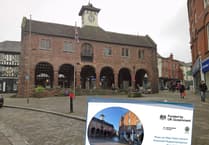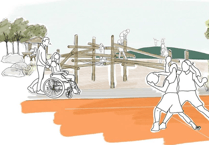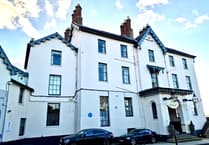A SEVEN hundred-year-old castle has been saved from crumbling to the ground by a restoration project.
Works costing more than £100,000 stabilising the walls and masonry have meant that Penyard Castle near Ross-on-Wye has finally been taken off Historic England’s Buildings at Risk Register after nearly 20 years.
Vegetation was removed from the ruinous main part of the 14th Century Marcher castle, which was part-converted to a farmhouse in the 1600s and is part-owned by the Forestry Commission, before full conservation repair works were carried out.
Historic England architect Chris Miners said: "The ruinous part in Forestry Commission ownership had been rebuilt as a farmhouse in the 17th century and this was itself now ruinous.
"This site was structurally unsafe with ongoing falls of masonry and had been overgrown with harmful vegetation which was increasing the structural dangers.
"Following a programme of vegetation control by the Forestry Commission, full conservation repair works were carried out to the structure above ground on their side of the monument, which is in split ownership with as private owner.
"The site is now stabilised, repointed and stripped of vegetation, and the castle was removed from the Heritage at Risk Register this year having been an annual entry since the first Buildings at Risk Register in 1998."
A grant of £77,760 from Historic England allowed work on the scheduled ancient monument to be completed earlier this year by Croft Ltd of Cannock under the direction of Nick Joyce Architects
Lying in woodland near the top of Penyard Hill, the castle was possibly built as a hunting lodge by Aylmer de Valence, who also built Goodrich Castle, in the early 1300s, on the site of a hermitage used by the monks from Grace Dieu Abbey near Monmouth.
By the late 17th Century it had been abandoned, and part of the structure was used around 1800 to construct a farmhouse.
Legend has it that a cave underneath the castle is guarded by a bird and is full of gems.





Comments
This article has no comments yet. Be the first to leave a comment.